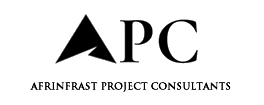
Ian Streets, managing director of About Access, reports on accessibility training experiences that highlight the need to cascade knowledge through organisations
As the saying goes, there’s always one, and you’ll often find them in a training environment. An attendee at one of our recent events made it clear he wasn’t interested in learning anything about accessibility because he was close to retirement.
The reluctant learner
On a personal level it meant that, having presumably been fortunate enough not to have to concern himself with accessibility so far in his life, he was content to head into old age with zero knowledge of how to get about if he should acquire an impairment.
On a professional level it meant that his current colleagues would be denied the opportunity to learn from his experience on the course. That, after all, is what training is about. You gain skills, knowledge and experience and you cascade it throughout your organisation and other networks.
Engaged participants and broader impact
The chap worked for the NHS and it’s worth pointing out that his colleagues on the course were altogether more engaged and professional, as were the participants at a session we delivered for a major arena used for conferences, entertainment and sport. They absorbed the information offered by the presenter and by fellow audience members – because these activities are very much two-way – and they went further.
In addition to considering how the ideas emerging from the training might be applied in their own immediate work environment, they broadened their horizons and identified colleagues who could take the message across the organisation.
The people they have to look after include staff, business visitors and suppliers, groups of all ages on behind-the-scenes tours, participants in the big international events and, of course, audiences running into thousands of people. It’s important that they get things right.
Training objectives and key insights
The aim of the session was to deliver two days of training to the customer experience and HR teams around accessibility. The brief was to look at the practices and policies concerning the physical environment.
We delivered the accessibility training, and the participants said they realised during the discussion how the issues raised went further than they had expected.
Signage: More than just directions
Specifically, they were struck by how the physical features of a building can be disabling, for example installing poorly designed signage. Also, how lighting can become a problem if it isn’t installed properly.
They weren’t aware of issues like this before, and they certainly hadn’t appreciated the detail.
They knew signage was important and they thought the signage they had did the job. It does, most of the time. But the session helped them to grasp issues such as making sure the design of the signage is fit for purpose – it has to be easy to read and understand, with a logical layout.
Their standard approach had been to assume that their signage designers understood about accessibility. Some might but not all, because their job is to make the signs. The team at the venue won’t necessarily know what makes a sign accessible because their expertise is about how you run an event.
Creating the crucial information to display on the sign should involve a collaborative approach – and that’s where we come in.
Elements of accessible signage
The elements that make a sign informative and accessible include the fonts used, tonal contrast, the layout of the text and any symbols – such as arrows and pictograms – and location. If the signage fails then people will struggle to find their way to such essentials as loos and exits, and asking for help may not be possible for various reasons.
“Specifically, they were struck by how the physical features of a building can be disabling, for example installing poorly designed signage. Also, how lighting can become a problem if it isn’t installed properly.”
We walked round the upper tier of the building and found a sign which indicated that the loos were to the left. There was a loo there, but the layout of the sign inferred there were additional loos in that direction.
The sign also indicated the loo was accessible, but it wasn’t. It was suitable for ambulant disabled people, but that’s not the same thing.
The combination of the way the sign was designed and its position in the building was misleading. The sign and placement should have been proofread before it was made and someone should have checked that the so-called accessible loo was of the standard indicated on the sign, especially as it was the only one in the vicinity.
There is also the issue that the buildings are now of an age where some of the loos don’t meet current guidance in terms of width. The customer service teams picked up on the potential difficulties which users of the loos might face in terms of reaching the soap and the paper towel dispensers.
Spreading accessibility knowledge across teams
But the big take-away for them was the recognition that what they were learning was also relevant to colleagues in other teams. Part of the way through the day, they suggested that the facilities team should undergo the training because they would learn so much more about how people use the built environment and what the barriers are to access.
They recognised that colleagues working on repairs and maintenance and decorating could help to make the building more accessible if they were aware of the issues. Meanwhile, the chap at the NHS trust is no doubt happy in his ignorance. He’s a rarity and hopefully that means there will always be someone nearby if he ever needs help with signage, steps, door handles or whatever.
Ian Streets advises public and private sector bodies and businesses on accessibility legislation, issues and best practice.
*Please note that this is a commercial profile.
The post Accessibility training sessions highlight need for sharing, not shielding appeared first on Planning, Building & Construction Today.

